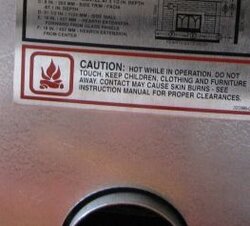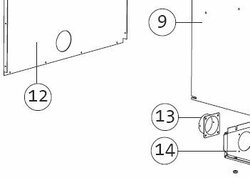We had our Kennebec installed about 3 weeks ago now, and I am having difficulties with smoke spillage when I load wood. The stove has a 25 foot 5 inch liner, uninsulated, in an inside chimney. I am having the installer come back to insulate the liner as per code requirements for my home/chimney style. That is another story....
Whenever I load wood, I have to be real careful to avoid getting a face full of smoke/fumes. At most, I can open 1 door 2/3 the way, and reach around to tend the fire, even after I've had the stove running for an hour, secondaries are working and showing a stove top temp near 700 degrees. (magnet mount 1 inch out from flue exit on top). It has not been cold here yet, temps around 10 C.
Questions - is insulating the 5" liner going to be enough?
My installer tells me that the 5 inch is enough for the stove, anybody else who has this stove agree/disagree?
Have not yet checked to see if an insulated 6" will fit, but if it does, is it worth me ditching the 5" liner, and eating the cost, for a 6"?
Maybe this is just a consequence of shoulder season burning - look forward to your answers.
Whenever I load wood, I have to be real careful to avoid getting a face full of smoke/fumes. At most, I can open 1 door 2/3 the way, and reach around to tend the fire, even after I've had the stove running for an hour, secondaries are working and showing a stove top temp near 700 degrees. (magnet mount 1 inch out from flue exit on top). It has not been cold here yet, temps around 10 C.
Questions - is insulating the 5" liner going to be enough?
My installer tells me that the 5 inch is enough for the stove, anybody else who has this stove agree/disagree?
Have not yet checked to see if an insulated 6" will fit, but if it does, is it worth me ditching the 5" liner, and eating the cost, for a 6"?
Maybe this is just a consequence of shoulder season burning - look forward to your answers.




